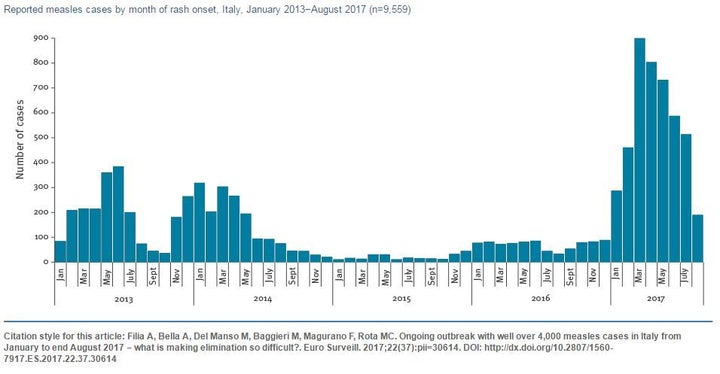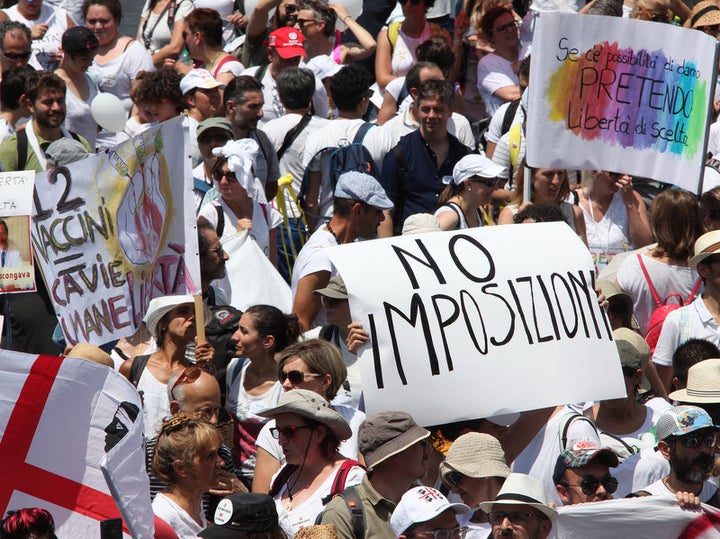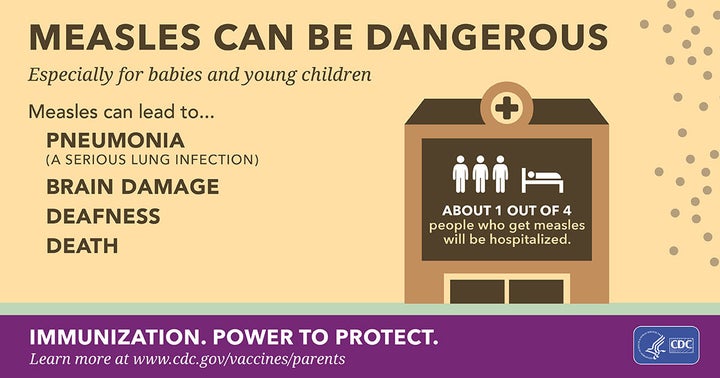
Il morbillo, come la parola stessa ci suggerisce, è un morbo che colpisce con frequenza e intensità.
Measles is targeted for elimination in the World Health Organization’s (WHO) European Region. However, Italy remains one of the 14 countries in the region with ongoing endemic measles transmission. In January 2017, the Italian National Health Institute (Istituto Superiore di Sanità, or ISS) detected an increase in the number of measles cases reported to the national surveillance system compared to previous months and years.

Distribution of measles cases by month of rash onset from January 2013. The peak number of reported cases was reached in March 2017.
According to a report in Eurosurveillance, the ongoing measles outbreak that has resulted in over 4,400 cases has been fueled by low vaccination rates and transmission in health care settings. Investigator Dr. Antonietta Filia and colleagues at ISS analyzed data on the 4,477 cases reported from Jan. 1 through Aug. 31 of this year, 3,417 of which have been lab confirmed. (The European Centre for Disease Prevention and Control noted 4,487 cases, including three deaths, through Sept.13.) The highest number of cases—900—was reported in March. Cases have been reported in 20 of the 21 Italian administrative regions, but 90 percent were reported by only seven regions. The Lazio region in central Italy reported the most number of cases (1,588) and the highest incidence (270 cases per 1,000,000 people).
According to the investigators, “The main reason for this outbreak is an accumulation of a large pool of measles-susceptible population due to sustained low uptake of measles vaccine in Italy over the years.” Measles vaccine uptake was very low in the years following its introduction in Italy in 1976, which has led to large vaccination gaps among adolescents and young adults and a constantly increasing median age of reported cases. Measles vaccine uptake peaked in Italy in 2003 at 90.6 percent, well below the 95 percent target rate, and has declined since to 85.3 percent in 2015.

Demonstrators in Rome protest against imposition of vaccine requirements.
Decreased uptake of the measles-mumps-rubella (MMR) vaccine in Italy in recent years is the result of vaccine hesitancy. The Italian government approved a law in July 2017 extending the number of mandatory vaccinations in persons up to 16 years of age. In 2016 to 2017, measles outbreaks have also been reported in other European countries. In Romania, over 9,100 measles cases have been registered, and 34 people died during this period according to the National Center for Surveillance and Control of Communicable Diseases (CNSCBT).

“Chickenpox parties” became popular in the 1970’s and 80’s as a way for parents to expose children to the virus at a young age.
Meanwhile, in the U.S., despite the massive measles outbreak in Minnesota, anti-vaccine groups are organizing “measles parties” for unvaccinated children as a means to boost “their natural resistance.” At these soirees, children who have not received the vaccine are exposed to the disease so that they could become infected and, thus, “build up” immunity. It’s similar to the idea behind “chicken pox parties,” which were highly popular among parents before the pox vaccine was introduced in the United States. These gatherings unnecessarily expose unvaccinated kids to a potentially grave risk and contribute to further spreading the outbreak. Despite robust scientific evidence proving the safety of the measles vaccine, parents in the anti-vaccine movement continue to push the debunked autism story from the unethical and unscientific publication of Andrew Wakefield—the founder of the modern anti-vax movement. And that is causing a serious, highly contagious and potentially fatal respiratory disease to make a comeback.

Despite robust scientific evidence proving the safety of the measles vaccine, parents in the anti-vaccine movement continue to push the debunked autism story from Andrew Wakefield.
Measles is a highly transmissible disease. In fact, 90-95 percent of people must be vaccinated in order to protect the entire population or achieve what is called “community immunity” (also known as herd immunity). Everyone who is eligible to get the measles vaccine should get vaccinated—not only to protect themselves but to protect those who cannot be vaccinated through herd immunity. In 2015, there were 134,200 measles deaths globally—about 367 deaths every day. In addition to illness and death caused by the disease, measles outbreaks require considerable health care resources for diagnosing and treating cases and implementing control measures.

Measles can be dangerous. It can lead to pneumonia, brain damage, deafness, death.
